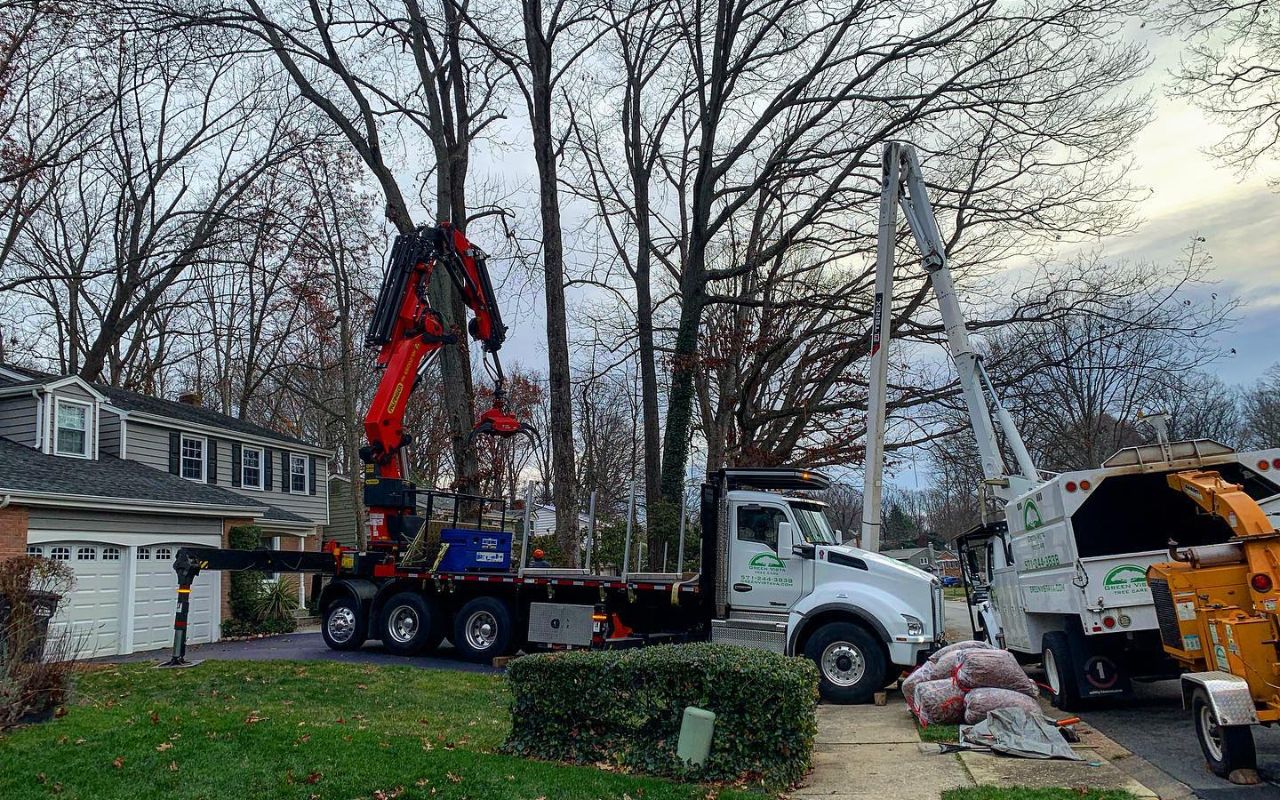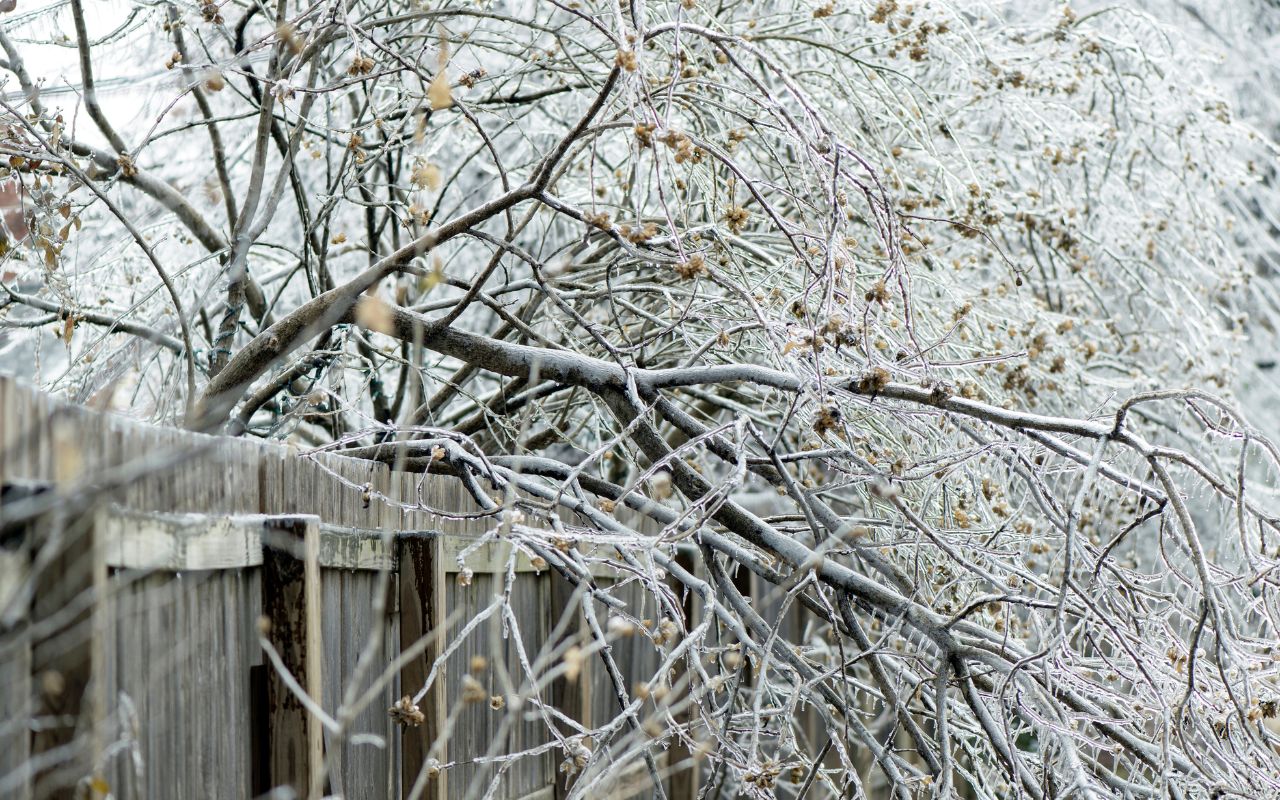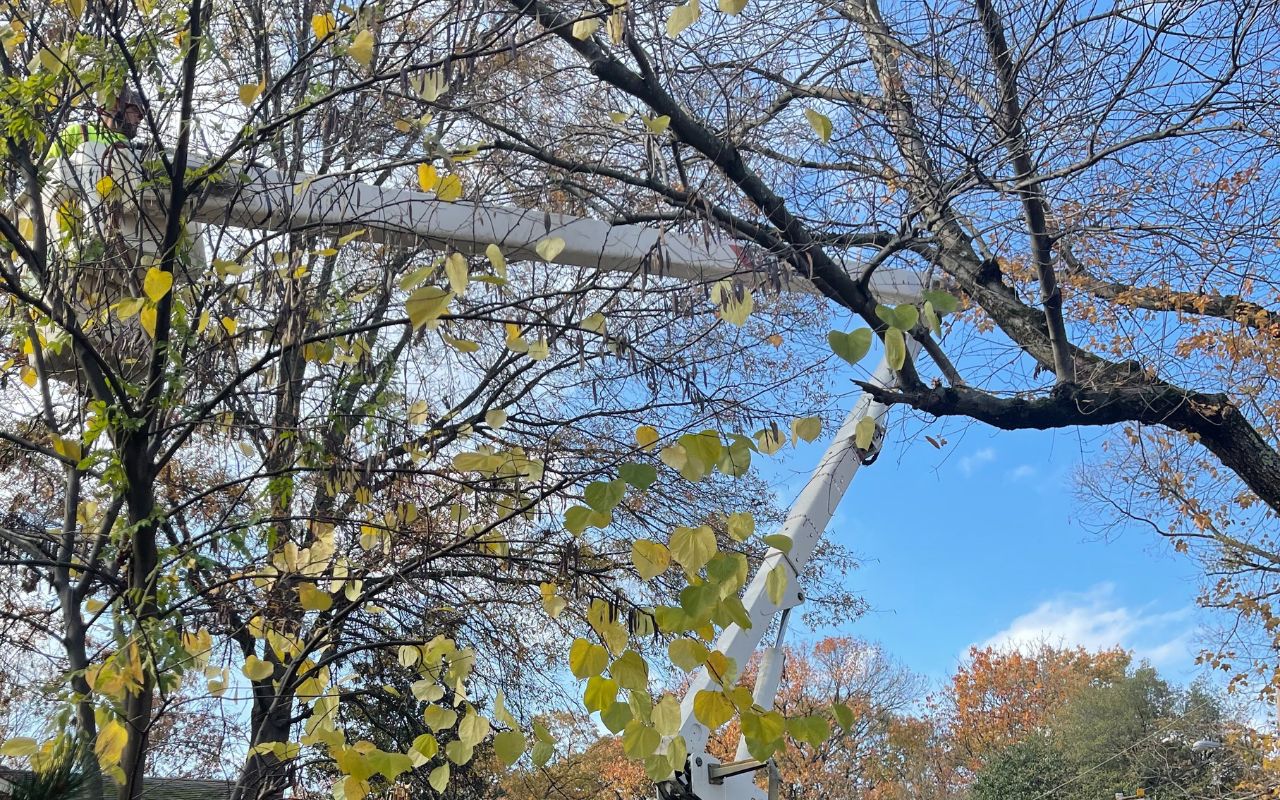
Many people think that tree care work can’t be done during the winter months or that tree care companies don’t offer winter pruning and other services.
The reality is that the colder months of the year are an excellent time for tree work, especially winter pruning and trimming. In fact, some major pruning work should only be done during the winter, such as pruning fruit trees to maximize fruit production.
That’s because trees are dormant during winter. Leaves fall off deciduous plants and trees take a “rest” until warmer spring temperatures prod them into putting on a new flush of growth.
Dormant pruning (pruning while trees are dormant) has several benefits, both for your trees and for your wallet:

Benefit #1 – It’s Easier to See Tree Structure in Winter
Deciduous trees lose their leaves in fall, making it easier to see the structure of your trees and identify dead or dangerous branches.
Without foliage, fruit, or flowers blocking the view, Green Vista professionals can check for any infections, dead or broken branches, insect issues, or other problems.
We can quickly tell whether or not a tree needs to be pruned to keep it healthy, safe, and looking its best.
Benefit #2 – Winter Pruning Avoids Spreading Disease
During winter, the bacteria, fungi, parasites, and insects that cause and/or spread disease are usually dead or dormant (unless it’s an exceptionally warm winter), so diseases are less likely to be transmitted by pruning.
Winter pruning helps prevent diseases like Dutch elm disease, oak wilt, and fire blight.
If possible, those trees susceptible to disease should only be pruned during the winter months.
 Benefit #3 – Winter Pruning Is More Efficient
Benefit #3 – Winter Pruning Is More Efficient
In December through February, we often get cold enough temperatures in northern Virginia to freeze the ground.
On cold days, that allows us to bring in heavy equipment without damaging your landscape, resulting in lower costs and faster work.
The frozen ground also prevents some damage caused by the large limbs that may fall to the ground.
This is especially true for large tree pruning jobs and removals.
How Green Vista protects your lawn during tree work >>
Benefit #4 – Dormant Pruning Is Less Stressful for Trees
A tree’s normal reaction to pruning is to stimulate new growth and to close the wound made by the pruning cut.
When we prune in winter, it doesn’t cause new growth until spring, when the tree has access to the moisture, sunlight, and nutrients it needs to support healthy growth.
In fact, your tree may have improved growth the following spring, because the fresh pruning wounds won’t be exposed for long before new growth begins. Dormant trees won’t be expending energy on growing leaves so you won’t be disrupting the growth cycle of the tree.
Plus, dormant pruning gives trees time to heal from pruning cuts before warmer weather brings out destructive insects and pathogens.
 Benefit #5 – Dormant Pruning Makes Trees Safer Over Winter
Benefit #5 – Dormant Pruning Makes Trees Safer Over Winter
Damaged, dead, or dying trees can be dangerous in winter, particularly when we get storms that bring wind, ice, or snow.
Dormant pruning is done to remove any hazards before they can compromise the safety of your property and loved ones.
It also rejuvenates weaker trees (thus making them safer) by removing dead and diseased wood.
Contact us if you notice any broken or hanging branches that may fall during a winter storm or from heavy ice or snow.
Learn more about how you can help trees recover from ice and snow damage >>
Should You Also Prune Spring Flowering Shrubs and Trees in Winter?
Early spring-blooming trees and shrubs flower on branches that already have buds on them before spring arrives.
If you prune those branches in winter, the tree or shrub will have few, if any, blossoms in spring. If you want to see the tree or shrub bloom in spring, it’s best to delay pruning until just after it’s finished flowering.
 Does This Mean We Shouldn’t Prune In Spring & Summer?
Does This Mean We Shouldn’t Prune In Spring & Summer?
Not at all! Spring and summer are excellent times to prune trees and shrubs – it simply offers different benefits and is done for different reasons. For example, warm weather pruning is done to:
- Remove deadwood that isn’t easy to identify in winter (on some tree species it’s hard to tell whether a branch is dead when the tree is dormant)
- Take out damaged or diseased branches
- Improve the overall look of the tree once it’s leafed out
- Open up the tree to increase air circulation or allow more sunlight into the interior
- Raise the tree canopy to improve your view
- Reduce the size of shrubs and trees that have grown too large or are getting in the way
Many of these pruning activities are done during the growing season because the issues often are not obvious until the trees have leafed out. And, of course, dead, damaged, or diseased branches and trees should always be removed, regardless of the time of year.
Over the long term, proper tree trimming and pruning can help promote the health, safety, and beauty of your trees.
Call or contact us today to learn more about our pruning services.
In need of tree care services?
Give us a call at 571-244-3838 or request a quote online!
Get helpful tips, local news, inspiring stories, and more delivered right to your inbox every month. Don't miss another issue - join today!





